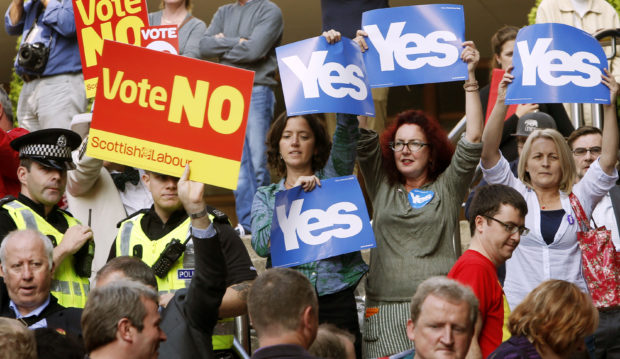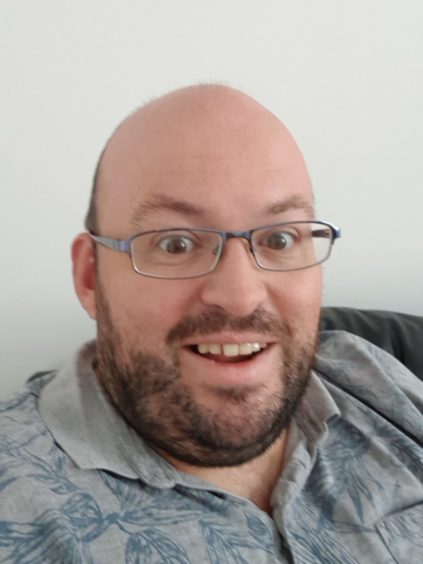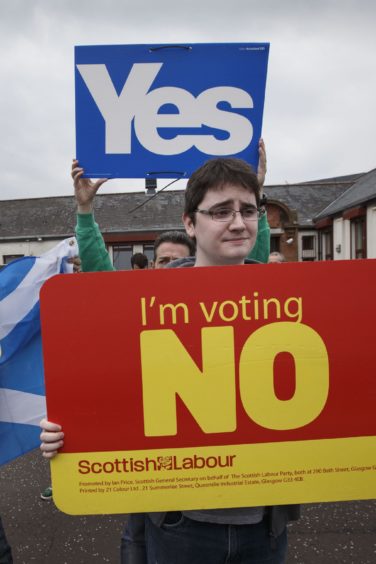
Over the winter and spring, the think-tank Our Scottish Future brought together Yes and No voters for a series of online conversation events. Rather than side-step the issues they disagree about, the programme – called “Scotland in a Zoom” – put the big questions around independence, the Union, and a 2nd referendum front and centre.
Participants were asked to listen and talk to each other about their contrasting views, and seek agreement. The full results will be published this week. Here project manager Eddie Barnes sets out some of the findings, and two attendees – one Yes, one No – set out what they took away from talking and listening respectfully to people from the other side of the constitutional fence.
In times of strife: Campaign calls for citizen forums to help Scots agree to disagree better
By Eddie Barnes, Our Scottish Future
In the wake of the Holyrood elections, a ceasefire in the constitutional battle has been tentatively agreed between the UK and Scottish governments.
But make no mistake, the truce is temporary. Nicola Sturgeon will argue her victory in those elections is a mandate to hold another referendum on independence in the next two and half years. With Boris Johnson opposing that plan, we face months of trench warfare.
Our Scottish Future, the campaigning group I work for, wants to find out whether it’s possible to avoid the grim prospect of more frustration and rancour. We are not neutral in the debate – we support Scotland’s place in the United Kingdom. But we believe that all sides need to find a way to “disagree better”. Digging in, as seems likely, won’t advance Scotland one bit. Nor does this binary contest reflect the reality of “middle Scotland” – the 40% of the population who see merit in both sides of the independence argument and currently occupy a kind of political no-mans’ land. Disagreeing better doesn’t mean some mushy compromise, and it doesn’t mean asking people to drop sincerely held beliefs. It means ending the mud slinging and making an effort to understand the motives, feelings and rationale of people in the opposite trench.
Over the winter months, we decided to try and make a start on this. In a project called “Scotland in a Zoom”, we brought equal numbers of Yes and No voters together to discuss the big issues facing Scotland, around independence and the Union. We then asked them to engage honestly and respectfully, and to listen to each others’ point of view. And – the hard bit – we also asked them to see if they could reach agreement on some of the thorny issues we face – like if and when to hold another referendum.
Some clear themes emerged. While agreement was often hard to reach, the groups were often surprised by how much they had in common when it came to their values and hopes for Scotland. And easily the loudest message we got back from the attendees was how much they valued and appreciated speaking to Scots of a different viewpoint in a respectful and friendly environment. A much-repeated comment made by many attendees was that this kind of good-hearted discussion should be encouraged more widely, so people could just talk and listen to each other for once.
We believe the two sides in the independence debate should take this advice to heart. Our own pro-Union side cannot simply bury its head in the sand on the question of independence and hope it goes away. Much as we might wish that the issue of independence is not a key issue for many Scots, it is, and we need to listen to and understand why pro-independence Scots feel as they do. Equally, the SNP government cannot just steamroller ahead with its plans on independence – instead it too should go out to listen to Scots who aren’t sure, and want their voice to be heard.
Our own programme could be used as a prototype by both governments to allow Scots to continue this conversation. The Scottish government has already begun to use Citizens Assemblies – a kind of jury made up of 100 or so people brought together to discuss issues of the day. However, over the coming months, ministers intend to limit them in scope to issues like immigration or social security.
We think both our governments should have the confidence to be bolder and to create assemblies which tackle the tangled issues of independence, the Union and a second referendum. The assemblies should be able to call on experts of their choosing to guide them. They could then be asked to deliver a verdict on what happens next.
If both sides are confident of their case, then they should have no fear of seeing these issues examined and scrutinised by members of the public. The assemblies may not come to an agreed path forward – but that is not the point. The point is that by disagreeing better, Scotland might avoid the trench politics of the next five years, and instead engage in a more fruitful debate about the next step in the country’s journey.
Eddie Barnes is project manager with Our Scottish Future, a progressive think tank campaigning for a new kind of Union, set up by former prime minister Gordon Brown
The Yes voter: Gary Reilly, 38, Edinburgh

For me, it comes down to how we take the country forward. What we’re being offered by Westminster is a politics that’s sliding further to the right. I would argue that this isn’t what Scotland votes for, it’s also not what Unionists in Scotland support either. I thought the 2014 vote would have been enough of a scare for Westminster for them to equip the Scottish parliament with genuine power but instead we got a bit of tax and tinkering with social security. I don’t think Westminster is able to offer what people in Scotland want.
It was really nice to have a forum where you could speak to people of a different point of view. There’s a lot of common ground – when somebody is talking about the NHS and the importance of healthcare, you don’t know whether they are Yes or No. I was paired with a lady who had concerns about the impact of independence on the economy; she had a valid point. It won’t be easy and there will be tough decisions to take.
The No voter: Chelsea Rocks, 24, West Dunbartonshire

I am not one of those people who goes around saying how much they love Britain. I just don’t think there is enough evidence that Scotland would be better off independent. That said, I don’t blame Yes supporters for wanting change – especially when you see the deprivation and inequality around us. If you feel like you haven’t anything left to lose, it will seem worth the gamble.
The format of the event helped. Even when you’re talking to family members or you’re in the pub, if the subject of the constitution comes up, it can just descend into – well you’re wrong, and I’m right. We were able to have a back-and-forth conversation and it turned out that there was a lot of agreement. When it comes to the economy, to the heath service, to education, the truth is that we all want the same things, we just disagree about how we get there. We need to spend more time focusing on the things we agree on and then look at how we go from there.

Enjoy the convenience of having The Sunday Post delivered as a digital ePaper straight to your smartphone, tablet or computer.
Subscribe for only £5.49 a month and enjoy all the benefits of the printed paper as a digital replica.
Subscribe © Robert Perry/Shutterstock
© Robert Perry/Shutterstock